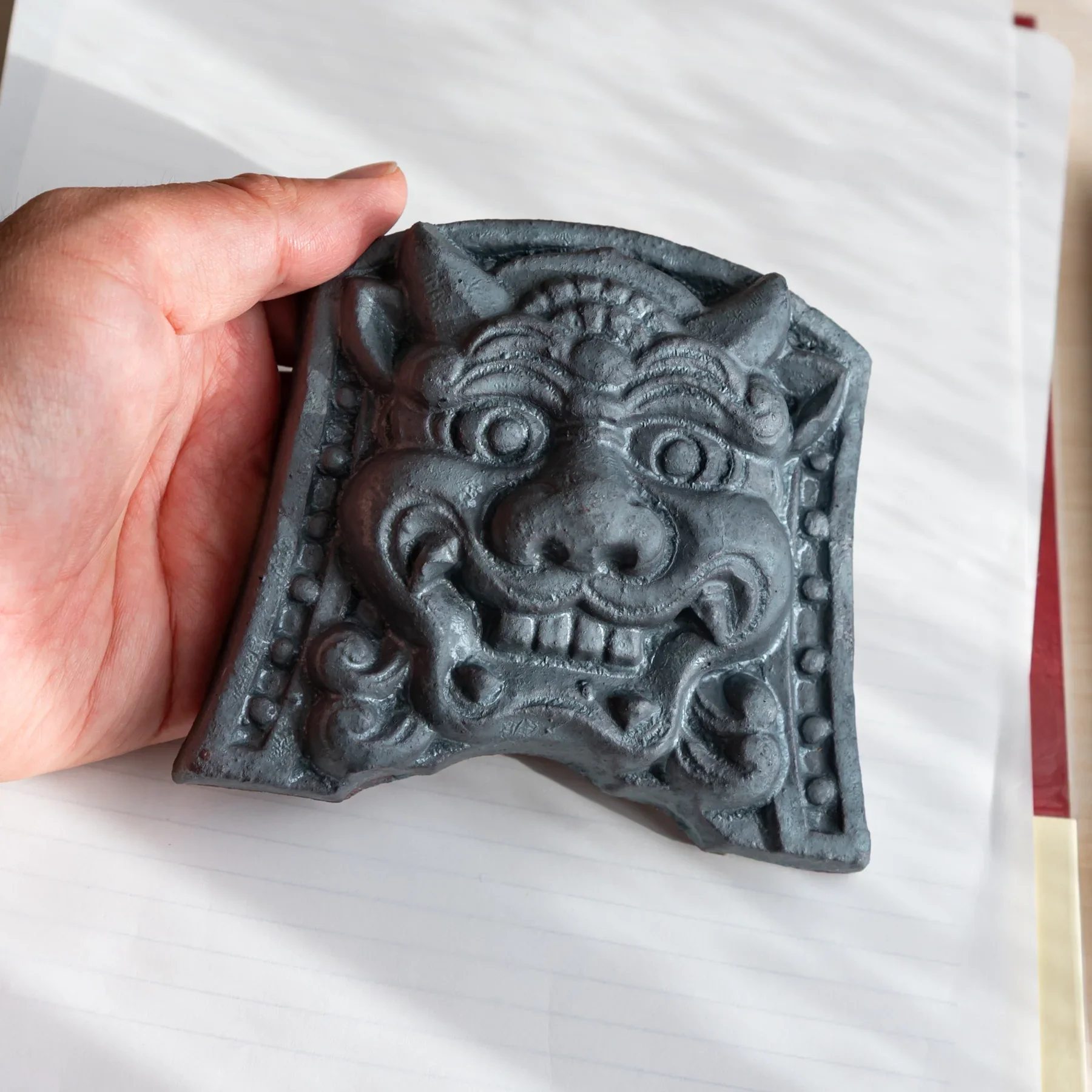Include the Measurer in the Measurement
from Komorebi Stationery
I recently did not buy a Japanese Kawara Roof Guardian paperweight, fashioned from “iron-rich Echizen clay”. I really wanted to, but did not. This is an experiment of sorts; I am intrigued by this physical item, and it puts me in mind of material things and the role they play in my life. Normally I would acquire it without hesitation; I am trying to be better with money, so, no purchase.
The Kawara Roof Guardian is a sculptural grotesque face set in the clay, a replica of a roof tile, with the spiritual task of ‘guardian’. The object weighs more than 500 grams, making it weighty and sizeable. Probably feels quite satisfying in the hand.
There is a magic in material things, and the Roof guardian is a little bit magic. I feel it like an essence, a connection between narrative (the story of the item), the form and the feel in the hand. The spiritual nature of material things is wrapped up in their actual material makeup, their substance, their texture, weight and shape.
I am a materialist. Objects and things hold a magic for me. The inner world, the spiritual world, is accessed through close attention to the material outer world.
Mundane aesthetics are interesting: designer objects - not so interesting. Objects in general, mundane and everyday designed items...far more interesting. Art too. I like to know the story as it gives me another way into the object.
I have a screenprint made by an American artist called William Scharf. It is bold and pop-art graphic, in an abstract way. He was a friend of Mark Rothko – the best man at his wedding, in fact. I like the print, its highly luminous and explicitly bold and graphic quality, but I also like the story. The lightning bolt of connection to the great artist, the knowledge that Scharf’s work was seen and known by Rothko himself. The works themselves are wildly different. A Scharf is nothing at all like a Rothko, in any way. But the connection is there.
It is easy to judge this preoccupation with the material and the narrative as somehow inferior to naked and unencumbered aesthetic judgement. I don’t know many people who like the Scharf print on its own terms. But I would argue that narrative cannot be excised from aesthetics, so I accept it as a given. Perhaps it is true that I like the narrative thread more than the aesthetics of the object. I am not sure why I would feel this is inferior or looked down upon, but I sense this to be the case.
I have a range of objects that I particularly love, for similar reasons. My fountain pens are conservative, but they meet the criteria of aesthetic and human-designed objects with a story to them. Several Visconti Van Gogh pens, one Visconti Rembrandt. A range of Porsche writing instruments and the odd Montblanc. These items tell a tale, and I like it.
I think this is because I am a storyteller at heart. My home environment is enriched by the stories attached to my things. This is one answer to the question – why to write about design? Because the physical and the material is linked to (created by?) the story that you can tell about it. The physical in the absence of the linguistic depiction of the physical has no reality to it. It literally does not exist. Design in the absence of story is not design at all…it is merely a physical object or setting, and even that is a description that renders meaning through words.
We cannot avoid spinning yarns by looking; looking is not objective, it is not without implication – we look by telling a story. This is one of the lessons of quantum physics (if you blur your eyes) – when measuring, include the measurer.

